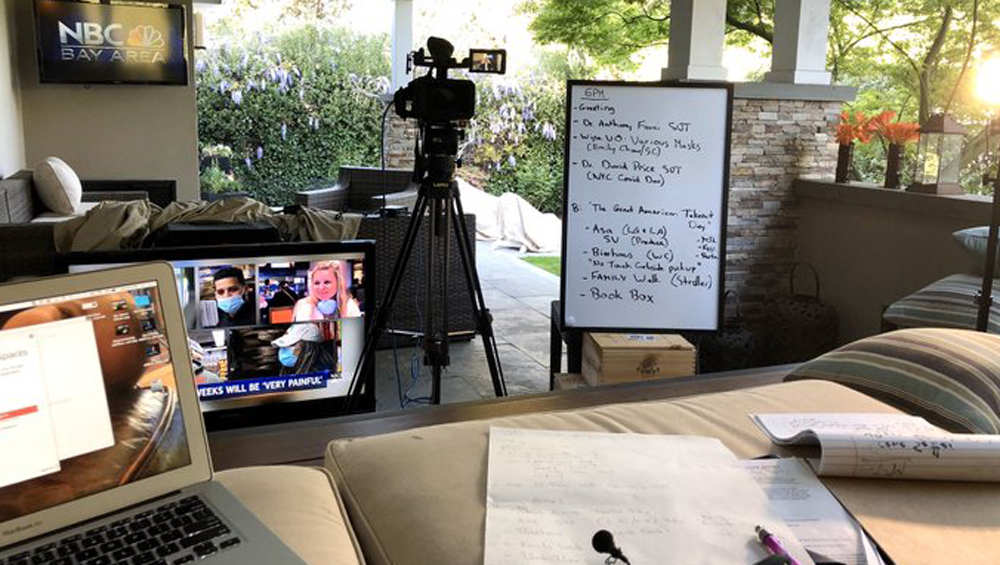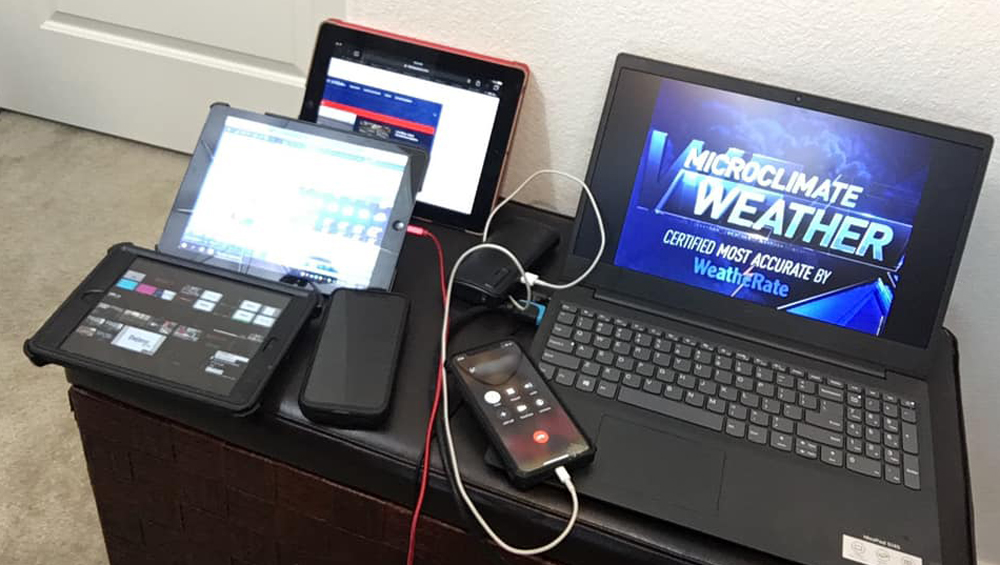
KNTV: Communication Is The Path Through Crisis

Stacy Owen probably never suspected the coronavirus would bring out her inner Dickens.
Yet among the numerous new facets of her job as a wartime leader – she’s president and GM of NBCUniversal’s KNTV (NBC) and KSTS (Telemundo) in the Bay Area (DMA 6) — Owen has found her daily emails to staffers to be among the most important actions of her day.
Those emails started as operational updates and meeting synopses, but they’ve expanded to include shout outs for employees’ exemplary actions over the last 24 hours; music videos for relevant quarantine-era songs (The Police’s “Don’t Stand So Close to Me” and Chaka Khan’s “Tell Me Something Good” were recent offerings); a moment of Zen from the HR department and even links to coronavirus-inspired Spotify playlists.
“It’s balanced with information and permission to unwind a little bit and disconnect while also feeling connected,” Owen says.

Stacy Owen
“Connect” has been Owen’s mantra since the crisis took hold and pushed about 80% of her staff into remote working conditions. Of all the priorities she’s triaging, keeping those remote workers feeling tethered is at the very top of the list.
“For those of us who are coming into the station, that poses its own set of challenges and the emotions attached to it, but it’s really important that we tap into that experience that people are having working from home,” she says.
That means recognizing the challenges of those simultaneously working and home schooling their kids along with single people isolating themselves who may feel especially alone. “The most important thing we can do right now is make sure we remain connected to each other, that we’re doing phone calls and not just emails and that we are encouraging people to get up, walk around, get out,” Owen says.
Back at the thinly-staffed home base in San Jose, Owen has plenty of other moving parts to contend with. The stations have added three extra half-hour newscasts. She’s also working toward a goal of having 100% of employees able to work from home, ultimately rotating people through the building in one- to two-week periods to reduce exposure in the building and maintain production capabilities come whatever else may.
For now, the essential on-site staff includes a director and assistant in the control room, the news directors for both NBC and Telemundo and at least a couple of editors.
“While we were already a technologically advanced station, when you are dealing with high-definition video and newsroom systems you are accessing through AWS, the speed and ability to do your job is tougher when you are doing it remotely,” Owen says. Thus, a small, core group of in-house staffers remains necessary in the event of connectivity issues or problems getting content from remote workers.
NBC’s Bay Area stations had the twin advantages of a solid business contingency plan (BCP) and an early start to pushing workflows out remotely. Owen says talks about the process began in late February with at-home tests starting the first week in March and workers shifting home shortly thereafter.
Protocols around employee health were clear from the outset: workers were asked to take their temperature before work and if they were at all feverish or symptomatic to stay home for at least 24 hours. If an employee was to test positive — Owen says that hasn’t happened yet — then social mapping would follow to determine where the employee had last been and who and what they touched when there. Affected employees in that map would be asked to stay home and self-isolate for two weeks while a deep cleaning of the building would also happen immediately.
Owen says the stations have also set aside designated “clean” rooms including a control room and production studio as a sealed-up backup space in case of contamination elsewhere in the facility. And should the building become altogether uninhabitable for a period of time, the BCP allows for a temporary move over to the NBC Sports Bay Area facility in San Francisco as a broadcast space (the regional sports network has already lent the stations some Dejero units and digital personnel, and their respective teams have cross-trained on each other’s newsroom systems should they need to be conscripted).
For those working at home, Owen made sure all had up-to-date laptops and ordered a new batch for all those in need. Weathercasters were among the first wave to broadcast from home, kitted with simple lights, monitors and laptops connected to their WSI weather graphics. Some, like morning meteorologist Kari Hall, started early on with a green screen, “so it looked almost like she was on set like any normal morning,” Owen says, noting the stations are also using both LiveU and Dejero units. Anchors, meanwhile, are using different web conferencing technology combinations to see what works best in terms of security and latency.
The same goes for internet connections. “We are not using any one way of people transmitting from home because people live in different areas and have different connectivity issues,” she says. Some employees are using Verizon, others AT&T and still others Xfinity Mobile, which shares a connection through NBCU’s parent company. Owen also allowed all work-from-home staffers to expand their home connectivity to one gigabyte.
Out in the field, multimedia journalists who can act as one-man bands have become particularly prized, and those who must meet as teams are encouraged to arrive at locations separately. The stations ordered extra boom mikes to allow for greater social distancing, and when the booms ran out of stock, “we went to Home Depot and got a bunch of PVC pipe and strung the mic poles up,” Owen says.
 All equipment is cleaned thoroughly at the end of a shift and then handed off to a new reporter, and mics are cleaned between every interview. Man-on-the-street interviews have been nixed. And those who still work in teams stay in those same team configurations consistently to minimize exposure to others.
All equipment is cleaned thoroughly at the end of a shift and then handed off to a new reporter, and mics are cleaned between every interview. Man-on-the-street interviews have been nixed. And those who still work in teams stay in those same team configurations consistently to minimize exposure to others.
Owen says she’s encouraging those working from home, meanwhile, to self-direct more. “The mindset that we are putting our employees in is let us know if you have any super-secret skills that you are holding back that you think could be really useful during the crisis,” she says.
Some of those skills have been directed to the stations’ digital platforms, where staffers have been taking all of viewers’ coronavirus questions in both English and Spanish and hunting down answers for everything they receive. They’ve spun up a coronavirus blog in English and Spanish and added few features like this Good News/Lo Positivo posts as well. And in addition to opening up windows into their home lives during remote newscasts, anchors like Raj Mathai are doing Facebook Live videos from home, including this one that had more than 10,000 views.
Both KNTV, the NBC affiliate, and KSTS, the Telemundo station, have long worked as a combined newsroom, so collaborations there were already in place and have served both stations well since newsgathering ramped up during the crisis, Owen says. The sales staffs are combined, too, which has helped with being on the same page when reaching out to advertisers.
Owen is a silver-lining thinker on that battered front. She says the first priority with advertisers has been to reach out to offer opportunities to change their messaging.
“Everybody is in a transitional place right now doing a reassessment of what their business looks like in the short term and the long term,” she says. “At the end of this crisis there’s going to be a pent-up demand, a desire for a sense of normalcy and reconnecting with a lot of these businesses that have had to press pause temporarily.”
Owen has pressed pause herself on her normally intense competition with other area stations. Now “we don’t measure ratings,” she says. “We measure impact at this point by who we are reaching, how we are reaching them and is what we are doing meaningful to them and raising them up.
“That will change when we’ve come through to the other side of the crisis.” Owen says so will some emerging best practices that may ultimately fold into long-term plans around remote working.
But Owen doesn’t want to go too crazy there.
“We are all going to be happy when we have a chance to be together again,” she says. “We are seeing that you can create a sense of community electronically, but at the end of the day there is no substitute for in-person collaboration.”
To read more TVNewsCheck coverage of how TV stations, station groups, news organizations and individuals are pivoting to work amid the coronavirus pandemic, click here.
































Comments (0)